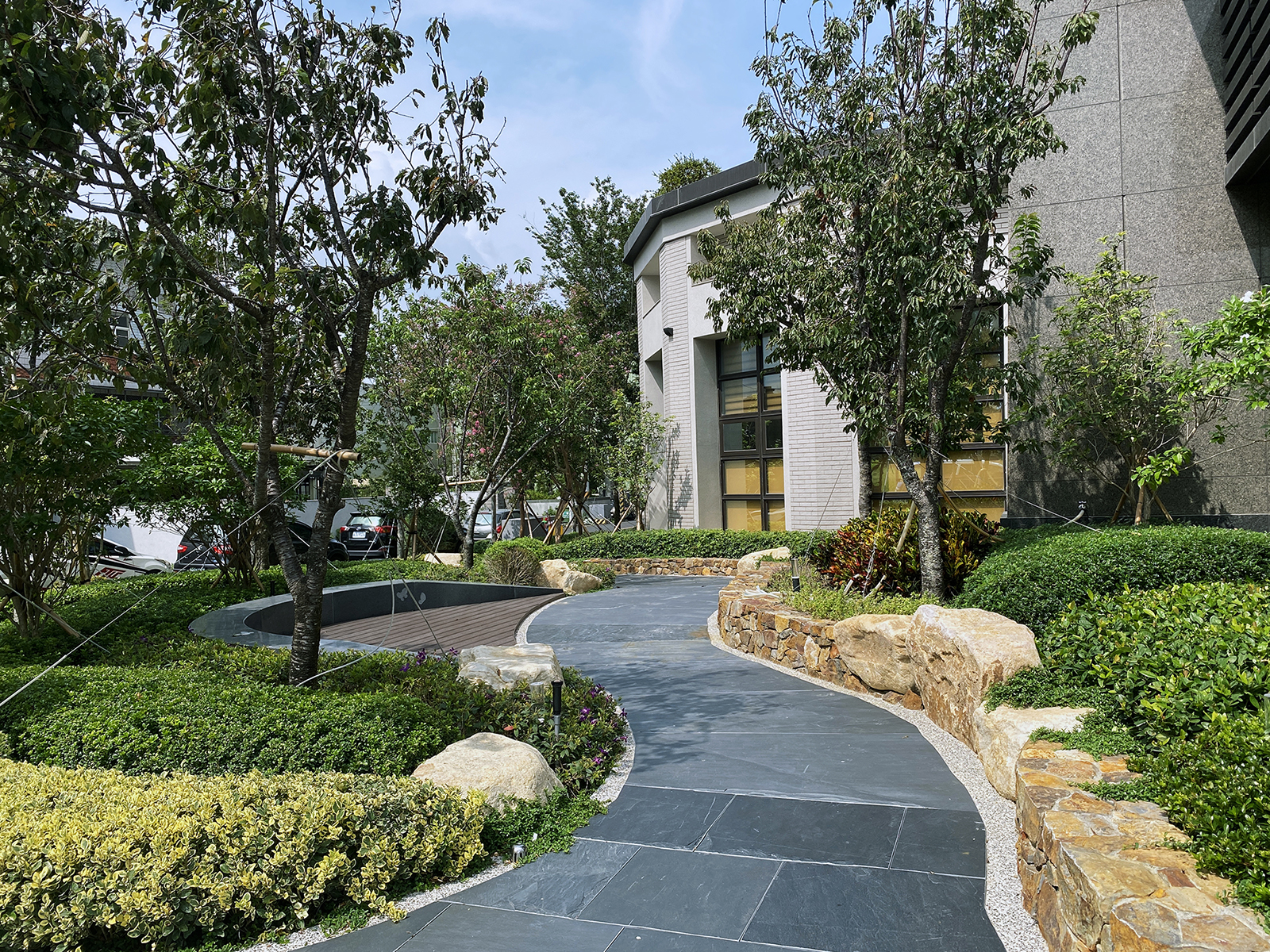Key Dates










Image Credit : Millet Design Co., Ltd.
JEOU TARNG ESTATE CO., LTD.

Project Commissioner
Project Creator
Project Overview
The project site locates next to the campus of Hong Wen High School. It is named after the chestnut forests located on the same site 50 years ago, with the water canals and streams meandering through them.
These beautiful sceneries disappeared as the urban development continue to expand.
Team
Chief Designer:YU-JUNG TSENG Concept design:YU-YUAN TSENG Construction drawing design:YI-HSUAN TSAI, YU-AN HSU Planting design:SHAU-YU SUNG, LI-CHIN CHAO Construction team: JEOU TARNG ESTATE Co., Ltd., Millet Design Co., Ltd., Lvying Landscape Design Co., Ltd.
Project Brief
The concept of the project is to reshape the landscape back to the forest in the old time. The building is surrounded by the forests. The foot trails meander through the forests like the water streams staying still on the ground and become the place for people to relax and enjoy the scenery.
The site is divided into five districts, with each of them having very different and distinguished characteristics.
1. The Voice in the Forest ─ The grassy slope extends from the entrance square, where the butterflies are singing together with the flowers.
2. The Light through the Forest –
Sitting on the wooden platform and bathing in the light and shadows scattered among the forest, the green moss on the rocks also enjoys the warmth and tranquility brought by the sunlight.
3. Fragrance from the Forests ─ Walking on the streamlined footpath, people enjoy the fresh atmosphere like the sea breeze, appreciate the quietness and kiss the blossoming Sakura.
4. Garden in the Forest—The mosaic collage at the entrance square presents a landscape painting, where the forest is like the brush of the earth and the colorful paints sway and change with the seasons.
5. Secret Trail through the Forest - The shady Liquidambar trail running through the forests forms a tree-lined visual axis. People sitting here can see the mountains in the distance and meditate while waiting for the children after school.
Project Innovation/Need
In the forest, one can explore diverse landscapes. Here, people can bask in the gentle sunlight streaming through the trees, breathe in the fragrance of blooming flowers, and admire the captivating colors that change with the seasons. This is a place that harmonizes with nature, offering everyone an opportunity to experience its purity and beauty.
1. Enhancing Safe Commutes for Children
The open space planning includes a setback pedestrian pathway designed for accessibility, with barrier-free, wide, and level paving. Tall shade trees line both sides of the path, providing sun protection, while seating areas under the trees allow pedestrians to rest and enjoy a safe and comfortable commuting environment.
2. Creating a Therapeutic Forest-Themed Garden
Visitors can immerse themselves in the vibrant colors, textures, sounds, and fragrances of plants, taking their time as they walk along winding natural trails. This garden serves as a joyful space for parent-child interactions and a hub for ecological observation, enriching life with healing and inspiration.
3. Establishing a Comfortable and Inclusive Outdoor Community Space
Whether gathering with friends for tea, hosting a picnic, or sharing everyday moments, this space fosters connections with nature and between people. It creates a comfortable and inclusive atmosphere for community engagement.
4. Cooling the Environment and Reducing Carbon Emissions Through Extensive Tree Planting
The design emulates natural plant communities by incorporating drought-tolerant and low-maintenance species, reducing pruning needs and water consumption. Large-scale tree planting effectively cools the environment and contributes to carbon reduction goals, creating a sustainable, low-energy garden that promotes harmony and coexistence with nature.
Design Challenge
In the forest, one can explore diverse landscapes. Visitors can bask in gentle sunlight streaming through the trees, breathe in the fragrance of blooming flowers, and admire the vibrant colors of the changing seasons. This harmonious space offers everyone a chance to connect with nature’s purity and beauty.
1. Enhancing Safe Commutes for Children
The open space planning includes a setback pedestrian pathway designed for accessibility, with barrier-free, wide, and level paving. Tall shade trees line both sides of the path, providing sun protection, while seating areas under the trees allow pedestrians to rest and enjoy a safe and comfortable commuting environment.
2. Creating a Therapeutic Forest-Themed Garden
Visitors can immerse themselves in the vibrant colors, textures, sounds, and fragrances of plants, taking their time as they walk along winding natural trails. This garden serves as a joyful space for parent-child interactions and a hub for ecological observation, enriching life with healing and inspiration.
3. Establishing a Comfortable and Inclusive Outdoor Community Space
Whether gathering with friends for tea, hosting a picnic, or sharing everyday moments, this space fosters connections with nature and between people. It creates a comfortable and inclusive atmosphere for community engagement.
4. Cooling the Environment and Reducing Carbon Emissions Through Extensive Tree Planting
By emulating natural plant communities, the design uses drought-tolerant, low-maintenance species to reduce pruning and water consumption. Extensive tree planting cools the environment and supports carbon reduction, creating a sustainable, low-energy garden that promotes harmony with nature.
Sustainability
The project aims to cultivate a harmonious and diverse ecosystem, restoring the flatland forest landscape once prevalent in this urban area. By incorporating local climate, topography, and sunlight conditions into the design, the project focuses on native species to establish natural planting patterns. This approach not only enhances biodiversity but also improves the health of urban environments and habitats, attracting wildlife to the area. In the future, this landscape will serve as a vital indicator of improved urban ecology, creating a shared space where humans and nature coexist in harmony.
Landscape Design - International - Residential
This award celebrates creativity and innovation in the use of practical, aesthetic, horticultural, and environmentally sustainability components, taking into account climate, site and orientation, site drainage and irrigation, human and vehicular access, furnishings and lighting.
More Details

